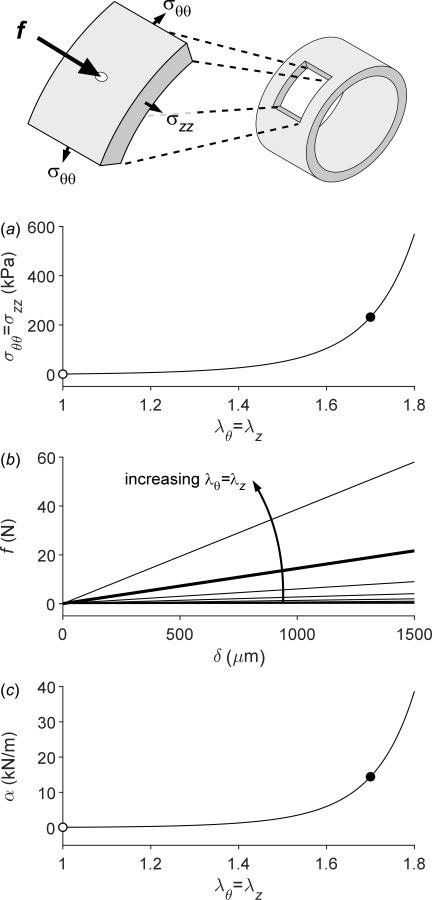Fig. 3.

In-plane prestretch has an important effect on out-of-plane indentation stiffness. The schematic drawing shows a potential arterial wall sample isolated for AFM testing. This planar sample could similarly represent an adherent cell after spreading on a surface. Panel a shows the effect of equibiaxial stretching () on mean (integrate through the thickness) in-plane Cauchy stress for an assumed isotropic behavior. Panel b shows the relationship between indentation force () and indentation depth () for values of in-plane stretch increasing from 1.0 to 1.8 in steps of 0.1. The slope of these lines, effectively the transverse structural stiffness , is plotted as a function of in-plane equibiaxial stretch in panel c. Closed dots (panels a and c) indicate approximate values of the in vivo in-plane stretch (); open dots indicate the absence of in-plane stretch (), consistent with many reports in the literature. The thick line in panel b similarly corresponds to . Note the marked effect of in-plane stretching on the out-of-plane (transverse) stiffness as measured, for example, in atomic force microscopy.
